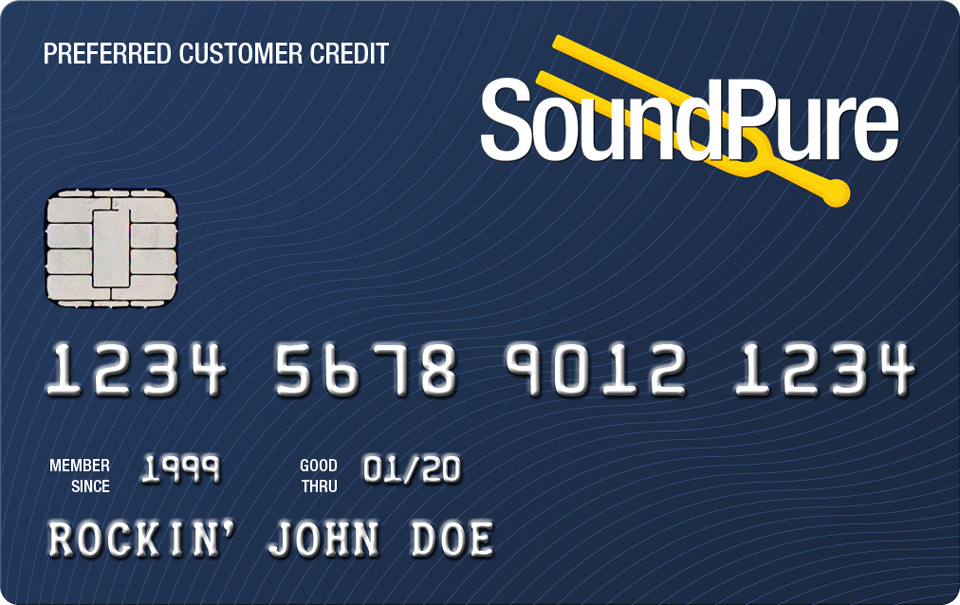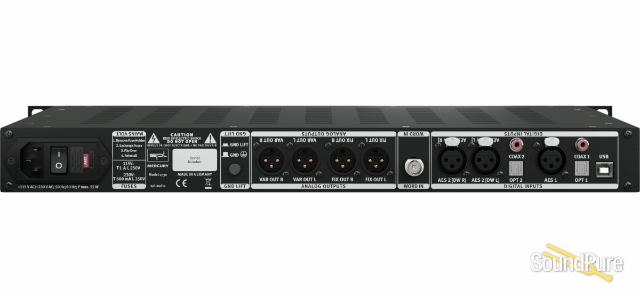-
Call Us Toll Free888-528-9703
-
Local/International (+1)919-682-5552
- Call Us! Toll Free! 888-528-9703
- Local / International (+1) 919-682-5552

SPL Mercury Mastering D/A Converter - Red From SPL
Mercury is the first Mastering DA converter in 120V rail technology.
$3,299.00
Retail: $3,666.00
"Experience the Difference"
 Payments as low as $75/mo.
Payments as low as $75/mo.
Manufacturer's Description from SPL
Mercury is a stereo digital to analog converter that fulfills the highest demands both technologically and tonally.
A total of seven digital inputs, two AES/EBU, two SPDIF, two TOSLINK as well as USB can be connected to Mercury. AES input 2 also supports Dual-Wire (DW) mode.
Each digital sources has its dedicated and illuminated switch for instant selection and fast comparison.Mercury is a stereo digital to analog converter that fulfills the highest demands both technologically and tonally.
A total of seven digital inputs, two AES/EBU, two SPDIF, two TOSLINK as well as USB can be connected to Mercury. AES input 2 also supports Dual-Wire (DW) mode.
Each digital sources has its dedicated and illuminated switch for instant selection and fast comparison.
DAC with DLP120
We looked at many converter designs and asked why innovations are almost exclusively on the digital side and very rarely on the analog side. Maybe it's because most of the developers have their background in digital technology and therefore develop analog technology more like a ‘cookbook’.
We have 30 years of experience in analog technology and consider ‘cookbook’ designs rather boring, inefficient and in need of improvement.
The output of the DAC-IC (AK4490) is an analog signal that must be filtered with a low-pass filter. This analog circuit is typically operated with the same voltage as the DAC-IC - for example 5V. Imagine that the first stage that finds the analog signal has a dynamic range and signal-to-noise ratio limited by this voltage. What a bottleneck.
The Mercury uses our 120V technology instead of the standard technology. And this twice in the newly developed DLP120 module. DLP stands for "Dual Low Pass". These are two separate analog filters in 120V technology. Depending on the type of digital signal, the analog signal passes through the PCM or DSD filter and can freely unfold into a huge dynamic range. This is audibly better.
Velvet Sound® DA Converter
The DA converter (DAC) in the Mercury is the AK4490-Velvet Sound® converter chip from AKM.
It offers a bit depth of 32 bits and a maximum sampling rate of 768kHz for PCM digital signals and DSD4 or DSD256 for direct-stream digital signals.
AES & DW
AES (or more precisely AES3 or AES/EBU) is a standard for the exchange of digital audio signals between professional audio devices. AES3 was jointly developed by the Audio Engineering Society (AES) and the European Broadcasting Union (EBU).
An AES signal transports two encoded PCM audio channels at a maximum sampling rate of 192 kHz.
The standard is defined under IEC 60958 Type I.
A special feature is the Dual-Wire mode (DW), where two AES jacks are operated together to double the maximum sampling rate. The second AES input therefore has two XLR jacks. Dual-Wire allows Mercury to be connected to any digital AES/EBU source.
Balanced, 3-core, 110 Ohm "twisted pair" cables with XLR plugs are used for connection.
Coaxial
The consumer version of AES is S/P-DIF (Sony/Philips Digital Interface). It is the most common method for connecting digital audio devices worldwide. Typically, the digital output of a CD player is connected here.
The jacks are labeled "Coaxial" and carry two encoded PCM audio channels with sampling rates up to 192kHz.
This standard is defined under IEC 60958 Type II.
Unbalanced, 2-wire 75-Ohm coaxial cables with RCA connectors are used for connection.
Optical
The two 'Type II Optical' connectors use optical fibre with an F05 connector better known by the Toshiba brand name TOSLINK.
These jacks are labeled "Optical" on Mercury.
Just like the coaxial S/P-DIF inputs, these inputs support sampling rates up to 192kHz for encoded PCM audio.
Our tip: You should attach importance to the quality of the optical fiber. With inexpensive plastic optical fibers, transmissions with fourfold sampling rates (176.4kHz/192kHz) can be subject to errors. In this case a real fibre optic cable should be chosen.
USB
The USB port, for connecting a computer, converts PCM and DSD audio formats.
Sample rates up to 768kHz are supported for PCM audio. For DSD audio up to DSD4 (quad-rate DSD or DSD256).
No special driver is required for an Apple Mac, as Apple natively supports USB class 2 up to a sampling rate of 768kHz.
To use Mercury to its full extent on a Windows PC, the SPL Mercury driver should be installed. With this driver, higher sampling rates than 44.1kHz and 48kHz can be output on a Windows PC.
DSD via USB
A playback of (unencrypted) DSD data from the computer can only be done via USB.
Specific software players such as Audirvana Plus (Mac), Channel D Pure Music (Mac), J River Media Center (Mac/PC), Signalyst (PC), Foobar2000 (PC), JPlay (PC) support DSD playback.
The USB Audio 2.0 specification defines different formats for handling PCM audio signals, but it does not define the handling of the DSD format. In 2012, representatives of many companies and institutions have developed a standard known as "DSD over PCM" or "DoP". This will represent and detect DSD audio in the PCM frames of the USB specification.
SACD or BluRay players usually do not output the DSD stream for copy protection reasons. This means that such a player can only be connected to one analog input, e.g. on the SPL DMC Mastering Console.
PCM & DSD
Pulse Code Modulation (PCM) is a method of encoding sampled audio signals that is commonly used for uncompressed audio. It is the standard format for digital audio in computers, on compact discs, in digital telephony and other digital audio applications.
Direct-Stream Digital (DSD) is a trademark of Sony and Philips. Both developed DSD for SACD (Super Audio CD), which was to become the designated successor to the CD (which was also developed by the two companies).
Since PCM and DSD are digital formats, there are other ways of playback. The highest resolutions for music are now available from download portals such as HD Tracks, Qobuz, HIGHRESAUDIO, primephonic, HDMusicStore, Bleep, Cybele, Gimell, HD-Klassik, 7 Digital etc.
DSD is fundamentally different from conventional PCM. While in a PCM stream the amplitude of an analog signal is sampled regularly at equal intervals and each sample thus obtained is quantized to the closest value within the digital stages, a DSD stream stores a sequence of 1-bit values before a "decimation" process converts the signal into a PCM signal.
Volume Control
On the analog side, Mercury offers a regular stereo output, which can be calibrated to all common reference levels, as well as another stereo output with continuously adjustable output level. Thus Mercury can also be used as a state-of-the-art monitor controller.
The volume control for the variable output of the Mercury is completely analog. In most other designs the volume control is done digitally as part of the converter chip functionality. A disadvantage of digital volume control is that the original bit resolution is only available at 0dB (maximum value).
As volume control we use the ALPS RK27 "Big Blue" potentiometer which provides a nice, sensitive feeling and excellent channel synchronisation. So not only the auditory, but also the haptic experience is on the highest level when adjusting the volume.
0dBfs Reference Level
Holding the Sync button down for more than two seconds will cause Mercury to change from Sync to 0dBfs display. In this mode it is possible to define the analog level of a full scale digital signal (0dBfs = 0dB full scale).
Mercury supports all currently used reference levels starting with 0dBfs = 14dBu. Followed by 15, 16, 17, 18, 20, 22 and finally 24dBu.

About Manufacturer
Sound Performance Labs! Full Range of Analog, Tube, and Digital rack gear with an innovative twist. With their most famous transient designer product, SPL has quickly become a household name in both the recording and live sound arenas.
Specifications
Analog inputs & output; XLR (balanced)
- Maximum input & output gain: 32.5 dBu
- Input impedance: 20 kΩ
- Output impedance: 75 Ω
- Common mode rejection: -82 dBu
- Frequency range (-3 dB): 4 Hz – 300 kHz
- Crosstalk (1 kHz): -108 dBu
- THD (0 dBu, 1 kHz): 0.000992 %
- Noise (A-weighted): -102.5 dBu
- Dynamic range: 135 dB
Digital Inputs, DAC768
- AES/EBU (XLR), PCM sample rates: 44.1/48/88.2/96/176.4/192 kHz
- Coaxial SPDIF (Cinch), PCM sample rates: 44.1/48/88.2/96/176.4/192 kHz
- Optisch SPDIF (Toslink F06), PCM sample rates: 44.1/48/88.2/96/with Glass fibre <1 m: 176.4/192 kHz
- USB (B), PCM sample rates: 44.1/48/88.2/96/176.4/192/352.8/384/705.6/768 kHz
- USB (B), DSD over PCM (DoP), sample rates: 2.8 (DSD64), 5.6 (DSD128), 11.2 (DSD256) MHz
- 0 dBfs calibrated to: 15 dBu
Internal Linear Power Supply with Shielded Toroidal Transformer
- Operating voltage for analog audio: +/- 60 V
- Operating voltage for relays and LEDs: + 12 V
Mains Power Supply
- Mains voltage (selectable, see fuse chamber): 230 V AC / 50; 115 V AC / 60 Hz
- Fuse for 230 V: T 500 mA
- Fuse for 115 V: T 1 A
- Power consumption: max. 40 VA
- Stand-by power consumption: < 0,3 W
Dimensions & Weight
- W x H x D (width x height x depth): 482 x 44 x 300 mm, 19 x 1.73 x 11.8 inch
- Unit weight: 4.55 kg, 10 lbs
- Shipping weight (incl. packaging): 6.7 kg, 14.77 lbs
Reference: 0 dBu = 0,775 V. All specifications are subject to change without notice.











